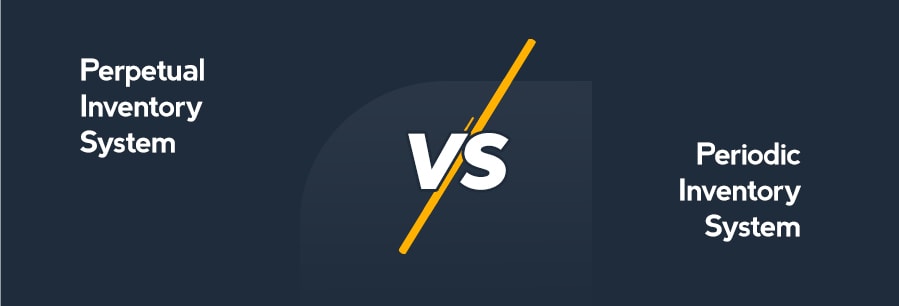MenuMenu
- Compare. Save. Ship.
- Main Menu
- How It Works?
- Shipping Services
- eCommerce
- Learn

Inventory management is difficult. Your business needs inventory to cover the demand, but you don’t want to have too much inventory because that would lead to higher storage costs. This is why efficient businesses rely on inventory systems to optimize their inventory levels.
A perpetual inventory system tracks your sales and inventory levels in real-time, so it helps prevent stockouts without overstocking. Read on to find out how a perpetual inventory system works and how it can help your business.
A perpetual inventory system is an automated inventory management method that records the changes in your inventory in real-time.
A perpetual inventory system tracks the changes in your inventory as products are bought and sold and updates your inventory accordingly.
This is an accurate way of keeping track of inventory changes, and it’s a more efficient way of accounting for inventory than a periodic inventory system.
The periodic inventory system requires regularly scheduled physical counts to update the inventory, so it’s more time-demanding and may not be as accurate.
When you use a perpetual inventory system, there’s no need to carry out manual counts unless you suspect that the inventory count does not match your physical one due to breakage, loss, or theft.
Many businesses owners wrongly believe that implementing a perpetual inventory system would cost more than a periodic inventory system.
While it’s true that you cannot implement a perpetual inventory system without paying for software, the overall cost of this system is usually lower than that of a periodic system because:
Manually checking the inventory on a regular basis implies labor costs
When you use a periodic system, the discrepancies between the inventory count and the physical inventory may add up over time and lead to stockouts.
The gaps created by manual inventory accounting may lead to poor business decisions, such as understocking or overstocking.
In addition, thanks to the accelerated rise in cloud computing and the emergence of multiple SaaS providers, integrated inventory management systems are more affordable than ever, so even small businesses can implement them without breaking the bank.
Even though perpetual inventory systems are highly efficient, they still have some restrictions. One of the most important things you should be aware of is that the software doesn’t know if an item is lost, broken, or stolen.
This means that, no matter which software you use, you should still carry out physical stock checks from time to time in order to avoid discrepancies and shrinkage.
As a rule of thumb, perpetual inventory systems are very good. They reduce the need for manual stock-taking, provide real-time data about inventory, and automize the record-keeping process.
Most of the available software produces separate ledgers for each inventory item. The ledgers contain valuable data, such as the item’s cost, inventory on hand, purchases, and more. You can use this information to produce reliable inventory forecasts and make smart business decisions.

While both inventory management systems can help you run an efficient business, the perpetual inventory system is superior because it provides real-time information on all your products.
If your business is small and you don’t have a lot of inventory, a periodic inventory system may be just what you need. But you may want to switch to a perpetual one as your business grows because it enables you to check the balance of your inventory at any given time.
In addition, the automatic features of the perpetual inventory system can help your team save time and improve their productivity.
The setup fee is optional and is typically charged a single time. This fee covers the software integration, infrastructure creation, and may also include a short period of training for you and your team, so you can learn your way around the provider’s resources. Even though some providers offer free setups, others charge $1000 or more for the third party logistics software setup.
The inventory management software keeps track of all the items in your inventory, no matter where they are located. This can be of tremendous help for businesses with distributed inventory.
This system tracks your inventory in real-time, so you always know what’s on stock and what isn’t. Plus, you can also set up notes showing you where the product is located if you have a distributed inventory. This can help businesses that offer next-day or two-day shipping to identify, pack, and ship the product as soon as possible.
Perpetual inventory systems update your inventory counts in real-time based on sales and purchases. Here’s how they do it.
Perpetual inventory systems are connected to point-of-sale (POS) systems. When a product is sold, the inventory system automatically adjusts the inventory count across all sales channels.
The system automatically recalculates and updates the cost of goods sold (COGS) after each purchase or sale.
The perpetual inventory system records and uses your historical data to update the reorder points for each inventory item, keeping the inventory count at an optimal level for all products.
The system automatically generates new purchase orders when a product reaches its reorder point.
Your employees scan the products that reach your warehouse so they’ll be introduced in your warehouse management system. Once the products are scanned and recorded, they show up in your inventory management system and are available for purchase.
Thanks to the constant inventory updates and its integration with point-of-sale systems, the perpetual inventory system offers multiple benefits, such as
Perpetual inventory systems used to be too expensive for small businesses. However, thanks to the recent increase of SaaS companies offering these services, the current offer is suitable for businesses and inventories of all sizes.
Having access to live data readings is a huge advantage for businesses, especially those that have a distributed inventory. This enables business owners to make smarter decisions about their acquisitions.
Demand forecasting is a crucial aspect of inventory management. By accessing historical information on inventory and sales, and combining this information with a real-time profit/loss overview, a perpetual inventory system makes it easy to forecast inventory needs, lowering the risk of stockouts or overstocking.
When you use a perpetual inventory system, every item that goes into your inventory is tracked and recorded in a database. This can deter theft, so it can lower the rates of lost stock.
This system records every purchase and sale, so it’s easy to determine your company’s end-of-year inventory balance. However, you should also do a physical inventory count from time to time to make sure that the inventory records are accurate.
Every inventory item you introduce into the system gets a separate ledger containing valuable information, such as the item’s cost, inventory on hand, purchases, and more. This ledger provides a detailed paper trail for each product, enabling you to make accurate forecasts and effective business decisions.

You can use inventory management formulas to determine when you should order more products, how much to order, and more. Here are some of the most common formulas used in perpetual inventory systems.
COGS = BI + P - EI, where
BI = Beginning InventoryEOQ = 2SCxDR/HC, where
SC = Setup CostsGP = R - COGS, where
R = RevenueEffective inventory management can help you find the balance between demand and supply. This, in turn, can help increase your profits, determine reorder levels, track inventory, and more.
Implementing a perpetual inventory system enables you to leverage automation in order to manage inventory, reducing the changes of understocking or overstocking, and increasing your forecasting ability.
Ship Expert’s fulfillment services come with built-in inventory management systems, order management, and analytics tools. Click on the button below to learn more about our warehousing and fulfillment services.


Director, Ship Expert
Greg Woo is a seasoned expert in the logistics and distribution industry, with a career spanning over two decades. He has a comprehensive understanding of shipping and distribution needs, and has extensive experience integrating with e-commerce stores as well as customer specific WMS (warehouse management systems) and ERP’s (enterprise resource planning software). His tenure in the industry and established courier and LTL partnerships have allowed clients to benefit from reduced shipping expenses, as well as improved operations through software and specialized integrations.
Greg is currently the Director at Ship Expert Inc., a role he has held since February 2015. Prior to his role at Ship Expert, Greg held significant positions at Juxto, a telecommunications and managed internet service provider.